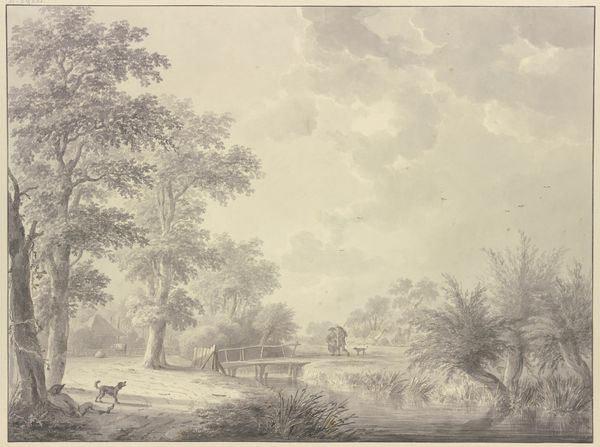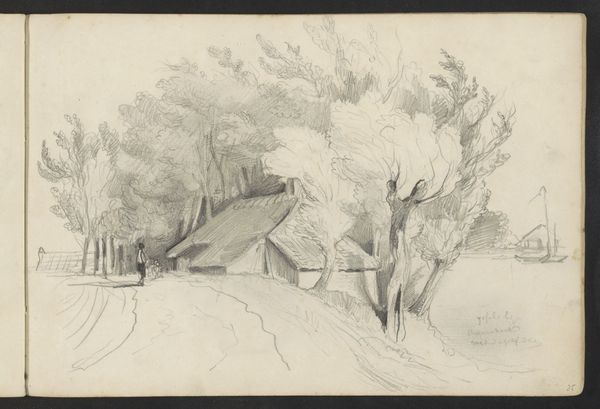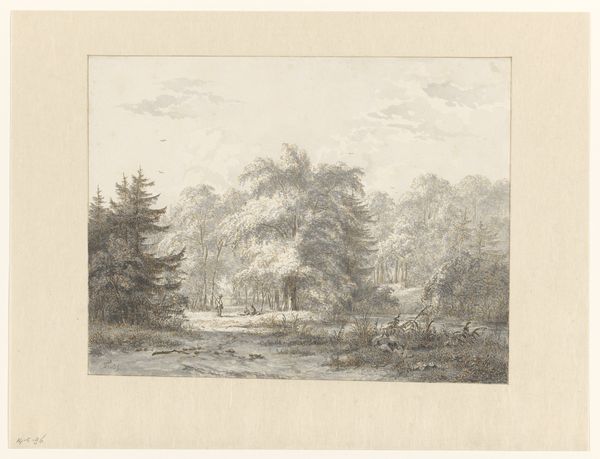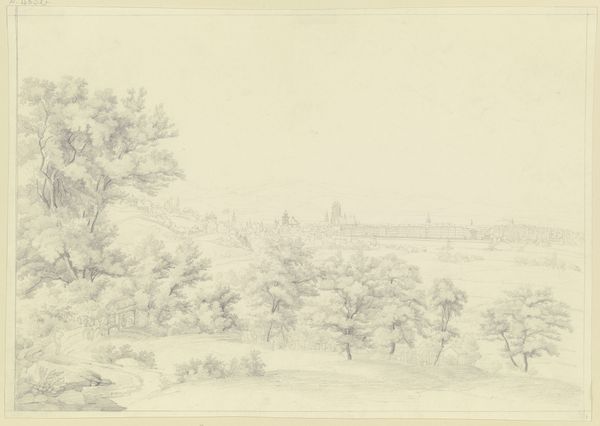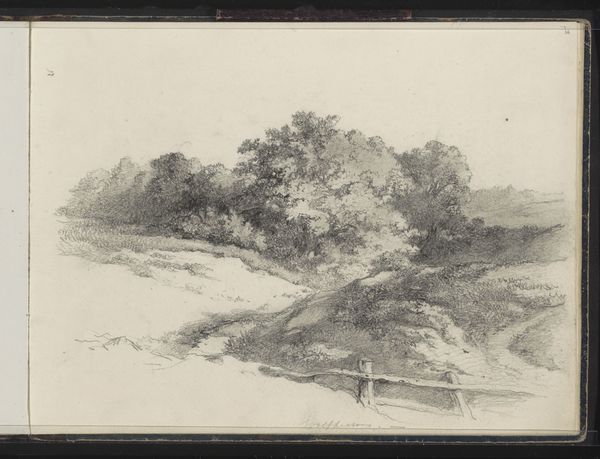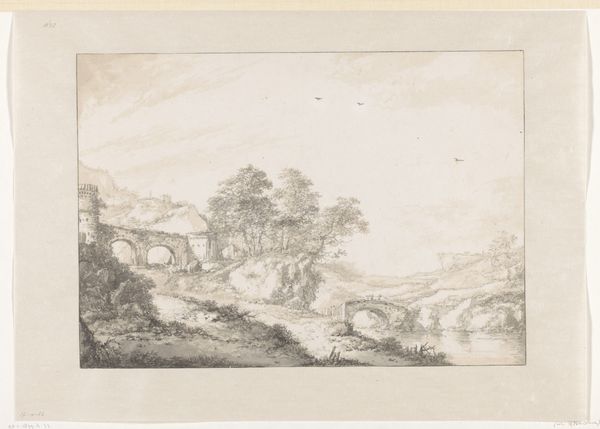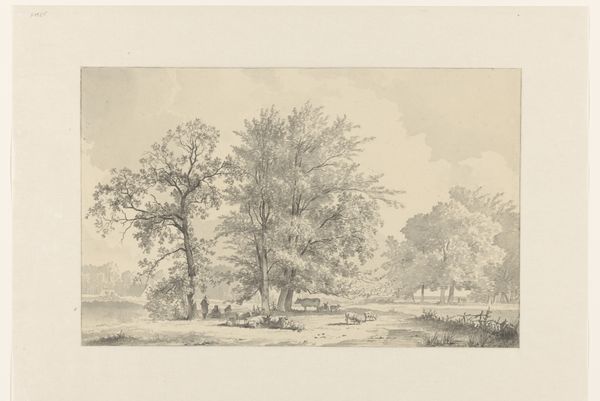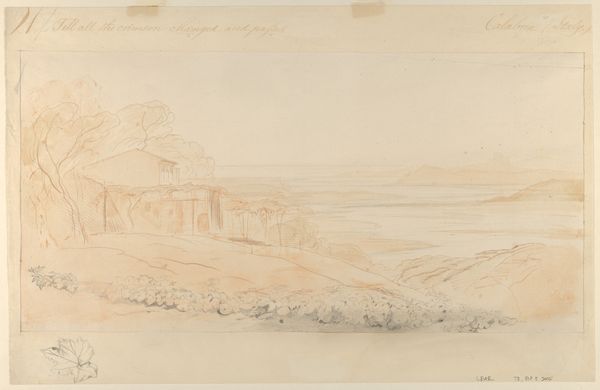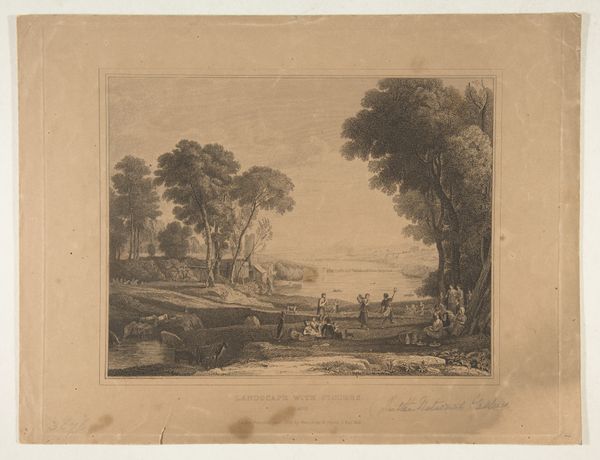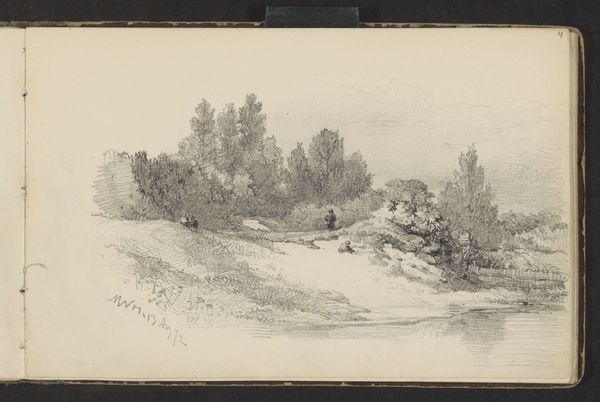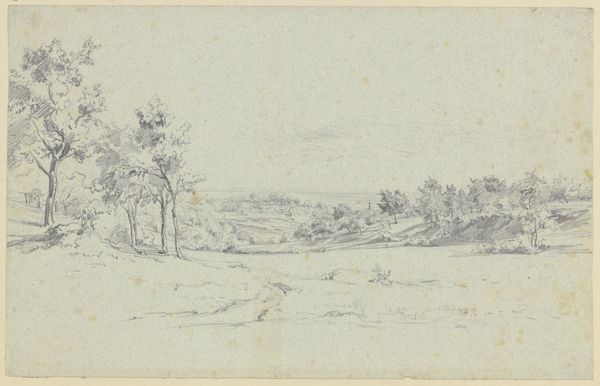
drawing, paper, pencil, graphite
#
drawing
#
landscape
#
paper
#
pencil
#
graphite
Dimensions: 212 × 297 mm
Copyright: Public Domain
Curator: What a dreamy landscape! I'm drawn to this piece, called "Balustrade and Fountain, Saint Anne's Heath." It's a drawing by Jabez Bligh. You know, there's no date associated with the work. What springs to mind when you see it? Editor: A kind of quiet power, I think. Something about the balustrade creates this very English sense of enclosure, but the fountain and soft graphite counteract it. There's an inherent tension, a subtle battle being waged between constructed boundaries and flowing elements. Curator: I like the way you've put that. I keep coming back to the gentleness, the almost melancholic beauty. It reminds me of the peace I feel after a really good rain. Bligh used graphite and pencil on paper to achieve this level of subtlety, layering the shades and textures to give real depth. Editor: Yes, and gardens themselves are powerful social and political spaces, reflections of the wealth and values of those who control them. This is no "natural" scene; it's carefully constructed. Look how the fountain becomes the clear focal point due to the framing of the bridge. In what context would Bligh choose this specific landscape and composition, and to what audience would he present it? Was it personal or commissioned work, perhaps reinforcing established power structures through idyllic representations? Curator: I hadn't considered that power aspect so overtly. It’s there in the manicured appearance of the heath. And that carefully placed fountain suggests, subtly, who controls access to the very source of life. It speaks to the ways in which leisure and access to nature were often deeply unequal. What are your thoughts about the fact that we are not sure when it was made? Editor: Dating definitely shapes interpretations. The drawing potentially gains new weight if contextualized alongside other socio-political shifts of the time. Without that knowledge, however, the landscape serves as an allegorical space onto which many narratives of authority can be projected. Curator: You’ve certainly given me something to consider. It’s those unseen power structures bubbling beneath the surface, then. Next time I walk in a landscaped garden, I won’t see it the same way again. Editor: Hopefully. The point of exploring art is to re-see the world. To become active participants, not passive observers, both in our interpretation of artwork and in the social worlds we navigate.
Comments
No comments
Be the first to comment and join the conversation on the ultimate creative platform.

